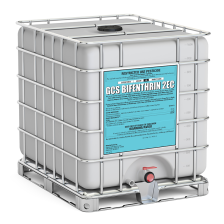Physoderma Brown Spot
Overview
Physoderma, caused by the fungus Physoderma maydis, is a significant disease affecting corn and other crops in the United States and Canada. This disease primarily targets corn, causing symptoms such as brown to black lesions on the leaves, stalks, and leaf sheaths. The most notable symptom is the presence of dark, oval to circular spots, often referred to as "brown spot" or "Physoderma brown spot." In severe cases, the disease can lead to stalk rot, which weakens the plant and increases the risk of lodging.
Physoderma thrives in warm, wet conditions, making it particularly problematic in regions with high humidity and frequent rainfall. The disease can reduce photosynthetic capacity, leading to lower yields and compromised crop quality. Effective management includes crop rotation, resistant hybrids, and timely fungicide applications. While specific fungicides for Physoderma are not mentioned, integrated pest management strategies are essential for mitigating its impact on crop health and productivity.
Photo Credit: Alison Robertson, Bugwood.org


